Menu
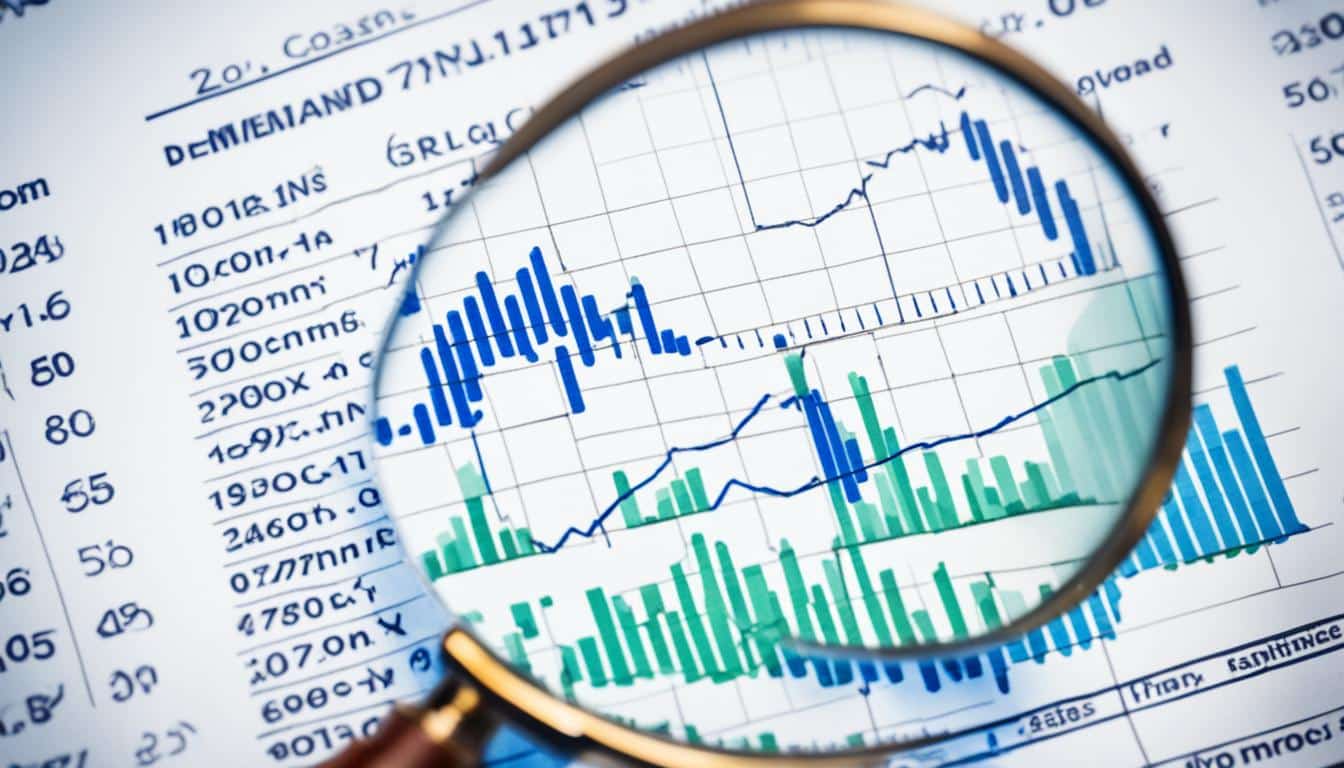
Businesses using market demand forecasting with external data can see big improvements. Nearly 90% of a company’s success, like in making consumer goods and retail, comes from outside. This includes things like the weather, what people can spend, and how many jobs are available.
These things hugely impact how much stock you need, when to make it, and where to send it. Take a global alcohol brand that saved $9 million a year by predicting demand better. Or an electronics company finding hot markets for a new gadget, boosting their sales.
A convenience store chain also avoided overspending on stock by getting better at predicting what their customers want. These success stories show the key is mixing your own past sales with data from the big economy. This mix helps businesses do better and save money smartly.
Market demand forecasting is key to businesses. It predicts what customers will buy. This guides production and inventory to meet needs without overstocking. Thus, it leads to happy customers. Let’s look closer at what it means and why it’s so important.
Forecasting demand helps businesses plan their stock. This leads to smarter inventory management. By knowing what customers will buy, companies waste less and earn more. They also prepare their budgets better, making smarter financial decisions.
Matching stock with what customers want is crucial. It ensures businesses don’t have too much or too little. This can sync product orders with marketing, leading to wiser inventory purchasing. Simple and sound demand planning can save money by avoiding storage costs through accurate guesses.
Various demand forecasting techniques are available. Some rely just on past sales, while others look at market trends. Choosing the right method matters a lot. It depends on how far into the future the business is looking and its needs.
Things like seasonality and competition shape these forecasts. Businesses need to adapt their models for these changes. Good predictive modelling includes market research and many methods for strong predictions.
| Forecasting Method | Application |
|---|---|
| Macro-Level Analysis | Broad economic trends affecting demand goals |
| Micro-Level Segmentation | Focused segmentation within the market |
| Short-Term Forecasting | 3-12 months projection for supply chain management |
| Long-Term Forecasting | 1-4 years projection for shaping business growth |
External data helps businesses forecast market demands better. Things like inflation, unemployment, and GDP can affect how well a business does. By looking at these and past data, companies can plan ahead and make changes.

Economic stats like GDP and unemployment are key for guessing what consumers will do. High consumer confidence can mean they’ll spend more. This helps companies know when to advertise more or stock up on goods. New market trends and technologies are also crucial for guessing right.
Knowing consumer actions and what they like is very important for forecasts. Things like ageing populations can change what people buy. Watching what customers say in reviews online helps spot trends early. This lets businesses adjust quickly.
Other data, like weather and holidays, is also vital. Weather tells us when to expect more sales, like ice cream in summer. Holiday schedules help plan when to have special sales.
| External Data Sources | Impact on Forecasting |
|---|---|
| Economic Indicators | Signal shifts in consumer spending patterns |
| Social Trends | Track emerging trends and shifts in consumer preference |
| Environmental Factors | Predict demand for seasonal products |
| Holidays and Events | Plan marketing campaigns and promotions |
New forecasting methods are changing how businesses predict demand. These methods allow companies to look at a lot of data and find hidden patterns. This helps them make better guesses about what customers will want. Having this tech advantage is key for companies wanting to stay ahead.
Using advanced techniques, like AI, can cost a lot but it pays off. They help businesses run their supply chains better. This means they can guess what people will buy and how much, especially vital for online sellers. It makes sure they keep their customers happy.
There are two main types of forecasting. Qualitative uses expert advice and surveys, while quantitative looks at past data and maths. Approaches like the Delphi Method and Econometric forecasting mix expert views and models to give smart predictions.
Barometric forecasting looks at economic signs when data is lacking. Market tests and stats help back up these new ways of guessing what’s next in business.
Today, business forecasting is also about using live data and various sources. This mix of methods and info helps companies to move fast and serve their customers better.
Good prediction of demand is crucial for businesses to keep their inventory in check. By knowing what customers will need, companies can avoid too much or too little stock. This helps them use their money and resources wisely. The role of demand forecasting in this cannot be ignored.
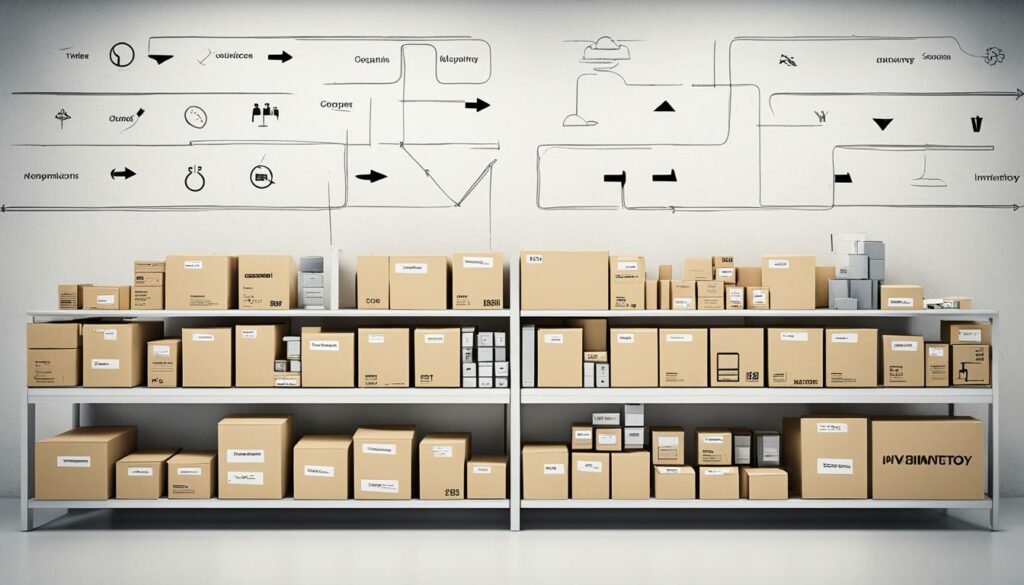
Keeping the right amount of inventory is key in managing stock well. Businesses use demand forecasting to understand what their customers want. This avoids having too much inventory, which costs money to keep, or too little, leading to unhappy customers. Getting inventory levels right is vital for a healthy budget and keeping customers happy.
Accurately predicting demand means companies can keep their inventory costs down. They won’t have too much stock, saving money on storage. This also means they won’t need rapid shipping options, cutting overall storage and transport expenses. With the right amount of stock, businesses can avoid waste and improve their profits.
In summary, using demand forecasting well helps businesses stay on top of their stock. This reduces the chances of spending too much, making unnecessary goods, and cutting down on storage costs. It’s a smart strategy that saves money and keeps customers satisfied.
Predictive modelling is key in market demand forecasting. It looks at old data and spots trends. Businesses then make models to guess future demand, helping their strategies. They use tools like predictive analytics to see market changes ahead and what customers might want. This makes their choices better.
Today, we can’t do without tech like advanced analytics, AI, and machine learning in predictive modelling. These tools let companies get deep knowledge from big data. This helps them plan better for what their customers will need. Take Amazon, for instance. It uses these tools to guess what items will be ordered. This helps them manage their stock better and serve their customers faster.
Predictive analytics uses smart math and machine learning to guess what could happen next, based on the past. These guesses are great for planning. They help companies know what their customers might buy, how much, and when. With these models, some businesses have made more money. And they could save lots on stock costs, making them compete better.
To make business plans better, you need lots of kinds of data. Information like news, what’s trending, and what your rivals are doing help. But don’t forget the numbers from your own sales and stock. This mix of info helps make better predictive models. It makes sure the guesses are close to real life.
Shops that use data for their stock have seen half as many items run out. This shows how useful predictive modelling is. It even helps forecast demand for certain times, places, and people. So, businesses can plan right. They can follow what the market will likely need. This makes what they do more on point and efficient.
To sum up, predictive modelling is like a rock in guessing market demand. It really sharpens how businesses plan. By using these smart tools, companies can handle market changes well. It helps them make choices based on facts for tomorrow.
Getting demand predictions right is tough because markets change quickly, and new technology disrupts things often. Changing customer habits also make it harder for companies to guess what people will buy. Not having up-to-the-minute information makes these issues even more difficult.
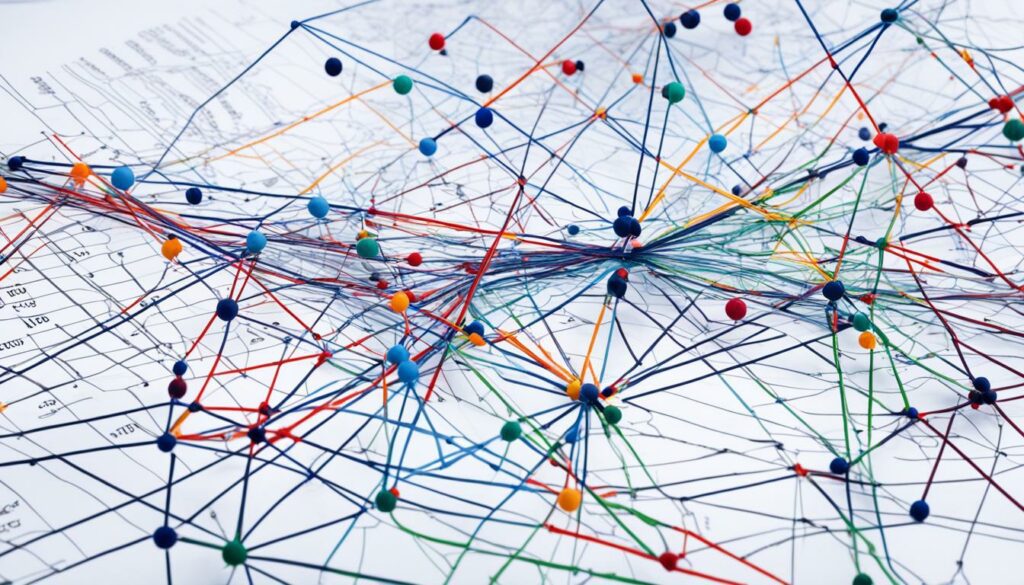
Market volatility means things can change fast. Economic ups and downs, what’s trending on social media, or big world events can all shake up how and what people buy. These shifts make it hard for businesses to stick to their plans. So, they have to keep adjusting to stay ahead.
Technological disruptions are a big hurdle too. Technology changes quickly, and firms need to update their tools for predicting demand all the time. This means spending a lot on new tech and skilled people. While AI can help spot patterns better than ever, blending it effectively with existing systems is still a challenge.
Data isolation in companies also makes the task tougher, pushing the need for better teamwork. Beating these hurdles is key for companies wanting to understand and meet today’s consumer needs.
The pandemic shook up the food and beverage industry. It changed how people bought goods, making planning hard. Yet, a big alcohol brand found a way to see this as a chance to grow. They used case study forecasting techniques to predict what the market needed.
By using smart technology and studying demand trends closely, this brand became a star in demand forecasting. This switch was key. It meant they made just enough, not too much. This let them use resources wisely and cut down on waste.
They started to take into account things like the economy and weather. This was a big change. It meant they made less that they couldn’t sell. So, they were able to serve their customers better and throw away less food.
The brand also got better at deciding how much of each product to make. With clear market forecasting insights, they didn’t buy too many ingredients or end up with piles of leftover stock. Because of this, they pleased their customers more and won over new ones.
| Metric | Before Forecasting | After Forecasting |
|---|---|---|
| Overproduction (%) | 20% | 7% |
| Food Waste Reduction (%) | 10% | 30% |
| Service Levels | 85% | 95% |
| Customer Base Growth | Standard | Increased by 15% |
Plus, they started using special supply planning software. This tool monitored progress, had extra space for data, and helped with plans. It was a major key to their success, making their operations smooth and their income steady.
Using big data and machine learning makes our predictions sharper. It looks at lots of data to understand what customers want. This helps businesses make smarter choices about making products, keeping them in stock, and managing how they get to customers.
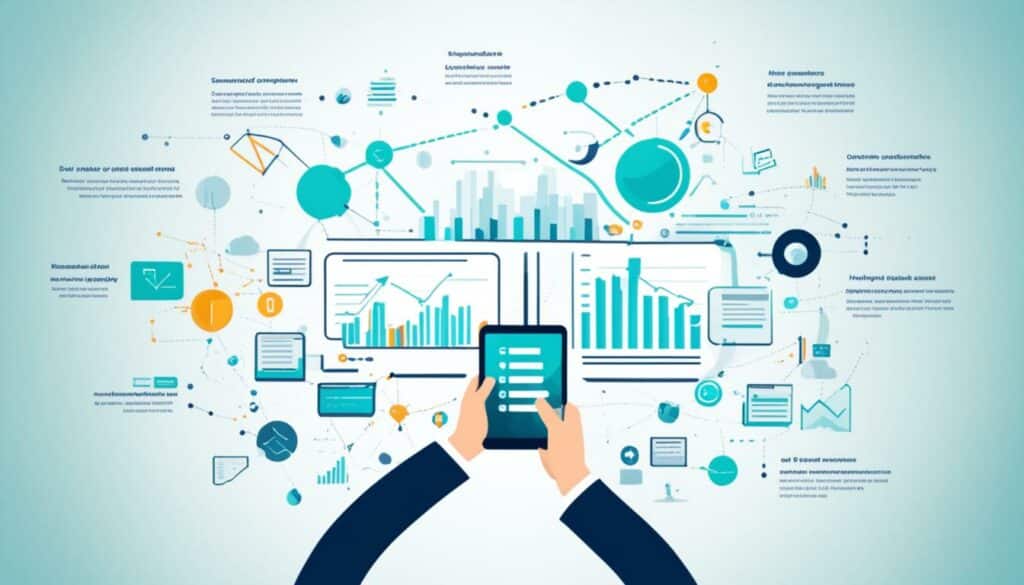
Big data analytics changes the game for demand forecasting. It lets companies see deep into what customers do, what’s trending, and what affects them from outside. They pull data from sales, social media, and even the weather to spot trends and make more accurate guesses about what people will buy.
This also helps them react quickly to changes in the market. It means they can keep just the right amount of products in stock. This makes customers happier because they’re more likely to find what they want when they shop.
Machine learning is key in making our forecasts better. It uncovers links between different factors that affect sales. These new insights mean we make fewer mistakes in predicting demand. This is despite the challenges of making sure data is correct and safe.
Machine learning really pays off by avoiding under- and over-stocking. It helps in planning how to make products better. Plus, it makes sure resources are used wisely in the process.
To predict demand well, several best practices are key. Firstly, always update your models with the newest data and knowledge. This makes sure your forecasts are up to date with any market or tech changes.
Getting insights from different parts of your company, like sales and marketing, is very important. It makes your forecasts richer and helps everyone work towards the same targets. This team effort boosts how well your business runs.
It’s best to mix the numbers-based methods with experts’ insights for a balanced view. Using facts and figures is great for understanding trends, but human wisdom adds a layer of detail. Together, they make your predictions stronger.
It’s also critical to look outside your company when forecasting. Economic shifts and customer habits matter a lot. Don’t forget about changes in your products or seasons. Your models should be ready for all these twists. Gartner reported that many companies still miss the mark in predicting demand at detailed levels. This shows there’s work to be done.
Knowing what mistakes to avoid is just as vital. Relying too much on old data, ignoring outside influences, or making your models too complicated can mess up your forecasts. Good communication between departments can fix many of these issues. Tackling these problems head on helps make your forecasting process better.
| Industry | Key Practices | Challenges |
|---|---|---|
| Retail | Point-of-sale data, collaborative planning with suppliers | Seasonal forecasting complexity |
| Healthcare | Predicting patient volume, using advanced algorithms and EHR data | Technological advancements’ impact |
| Manufacturing | Integrating ERP systems with forecasting tools | New product lifecycle effects |
| Renewable Energy | Advanced analytics, weather pattern data | Demand forecasting complexities |
To sum up, getting forecasting right requires a holistic approach. It’s about using both in-house and outside info, smart analytics, and teamwork. Following these steps will boost your forecasting’s accuracy. This, in turn, helps you make smarter business choices.
Recent years have seen big steps in how businesses guess market demand with technology. Old ways from 2008 are now out of fashion, thanks to artificial intelligence (AI). By 2012 to 2015, forecasts were about quantiles and grids. But by 2016, the game changed to using machine learning and stats together in better, more ‘probabilistic’ ways.
Thanks to these changes, modern forecasting tools are more accurate than ever. They use deep learning and special programming to make better guesses. For example, McKinsey Digital found that using AI drops errors by 30 to 50%. This means big savings for businesses: a 65% cut in lost sales from being out of stock and a 10 to 40% drop in keeping goods in warehouses. These big steps show how vital advanced forecasting tools are today.

Now, companies can guess what customers want more quickly, thanks to tools that use real-time data. PepsiCo is one company using tools like these to look at social media and make better sales predictions. A survey from 2019 found that nearly all companies (99%) had trouble with inventory. And 73% of them said these issues led to losses in money. AI is turning the tide by making predictions more reliable and helpful.
Companies are also starting to use the Internet of Things (IoT) with older forecasting tools. IoT connects more to our daily lives, looking at things like when we buy in a year and the weather. And the recent use of AI in forecasting tools means companies can now guess demand very quickly, which is a big jump from how things used to be.
The forward steps in forecasting technology are huge. Big companies like Wal-Mart are really investing in talent that understands tech and retail to use these new tools well. Gartner says 45% of companies are already using AI to guess demand better, and another 43% plan to jump on the bandwagon within two years. These facts show that more and more, companies trust technology to get forecasting right and be more efficient in our modern world.
| Year | Technological Milestone | Impact on Forecasting |
|---|---|---|
| 2008 | Traditional Methods | Still prevalent but becoming outdated |
| 2012-2015 | Quantile Forecasts and Grids | Dominance in demand forecasting |
| 2016 | Probabilistic Forecasting | Machine learning and high-dimensional statistics integration |
| 2019 | AI-powered Tools | Significant improvements in accuracy and efficiency |
Forecasting is key for supply chain optimisation. It influences production and delivery to customers. Accurate forecasting lessens stock-outs, makes manufacturing better, and boosts supply chain efficiency.
Good forecasts mean better financial plans, wiser use of resources, and happier customers. This is really important now because how consumers buy things has changed. So, supply planning needs to be sharp for businesses.
The year 2023 will see big changes in supply chains. Things like how consumers act, nearshoring, and using tech to predict what’s needed are coming up. It’s important that supply chains track how much stock they have, how quick they fill orders, when they restock, and how well their suppliers perform.
There are many ways to forecast demand. Take Passive Demand Forecasting. It looks at past data and trends to figure out what might be needed in the future for businesses in steady markets. Then, there’s Active Demand Forecasting, which uses current trends, how consumers are changing, and industry movements for businesses in quick-moving settings. It’s crucial to understand these methods for using resources well.
Let’s talk about different timeframes for forecasting:
| Forecasting Horizon | Focus | Application |
|---|---|---|
| Short-term | Immediate future, up to one year | Day-to-day operations, seasonal fluctuations |
| Long-term | Several years ahead | Strategic planning, capacity expansion, new market entry |
Looking at External and Internal Demand Forecasting methods gives us important info. External looks at big market signs and competition. Internal focuses on a company’s own sales and data to run things better. Both methods help in seeing the bigger picture for supply planning.
Knowing about these methods and trends helps businesses get ready for surprises. They can aim their strategies at supply chain optimisation. This keeps them in the game, competitive, and effective.
Knowing what your customers will want next can give any business a big edge. With good demand forecasting, a company can match its work directly to what customers need. This means doing things more efficiently, cutting down on costs, and getting rid of mistakes.
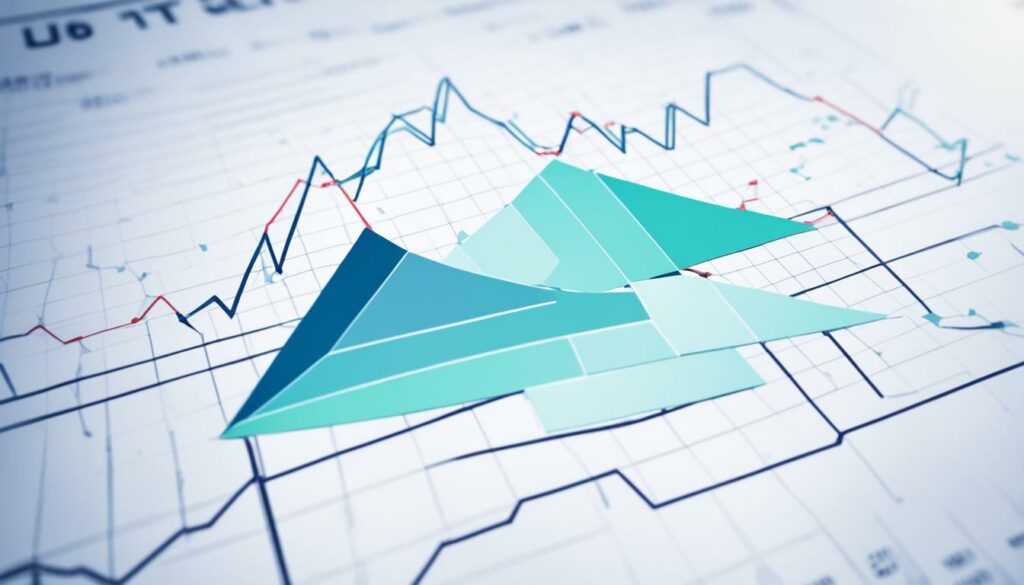
Demand forecasting makes running a business smoother. It helps in guessing what customers will buy, letting companies keep just the right amount of stuff in stock. This means they don’t waste money on too much stock or lose out on old stock. Companies that are good at predicting what’s in demand keep less stock, make better on-time deliveries, and work more efficiently.
Keeping customers happy is a must. Accurate demand forecasting helps make sure what customers need is ready for them. This stops things being out of stock and builds trust in the brand. By really studying what was sold before and keeping an eye on stock, companies can plan special sales and stock levels better. This all adds up to a better shopping experience for customers. Good forecasting means happier customers and more chances for growth.
| Benefit | Impact |
|---|---|
| Optimising Inventory | Minimises carrying costs and reduces excess inventory risk |
| Improving Financial Decisions | Enhances profit margins and cash flow |
| Ensuring Customer Satisfaction | Prevents stockouts and boosts customer loyalty |
| Enhancing Supply Chain Coordination | Shortens lead times and reduces operating costs |
In today’s market, businesses need advanced forecasting analytics tools. They help predict future demand accurately. Many practical tools and analyses are out there for different needs.
Starting with spreadsheets, they are easy to use. But, they struggle with big data sets and complex analysis. For harder tasks, businesses use software that mixes predictive analytics and handles real-time data well.
It’s key to mix different forecasting methods. SAS Forecast Server and Oracle Demantra are great for this. They combine different ways of predicting what customers will want. This helps avoid mistakes like having too much or too little product.
Market research demand forecasting stands out. It uses surveys to get insights that sales records might miss. Qualtrics helps businesses do in-depth market research, adding valuable data to their forecasts.
| Tool | Features | Best Use Case |
|---|---|---|
| SAS Forecast Server | Integrates econometric models, real-time data processing | Complex analysis for large data sets |
| Oracle Demantra | Predictive analytics, real-time adjustments | Global supply chain forecasting |
| Qualtrics | Customer surveys, market insights | Market research demand forecasting |
Cloud platforms like Salesforce and SAP Integrated Business Planning help with sales forecasting. They gather feedback from sales teams to make forecasts more accurate. Market analysis tools like Tableau help see data trends clearly.
Using market analysis tools and software makes forecasting more accurate. This helps with production planning, managing inventory, and allocating resources. Adopting these technologies is key to staying ahead and meeting customer demands in today’s market.
Market forecasting is key for businesses today. It helps them predict trends and meet customer needs better. This task is complex, varying by the market, location, and competition.
Forecasting won’t ever be perfect, but its advantages are huge. By looking at past sales and understanding seasonal changes, companies can manage their stock better. Also, looking ahead far, though not as exact, gives them clues for future plans.
Forecasting shapes many business areas like making things, managing cash, and deciding how to move products. With tools like Big Data, different industries can improve their customer service, keep buyers happy, and save money. Plus, it cuts waste by avoiding too much stock and unsold items.
In the end, good market forecasting is critical for business success. It helps them control their stock well and make wise supply decisions. This way, they can deal with demand better and lead the market by predicting trends.
Market demand forecasting predicts future customer needs. It uses methods from looking at past data to advanced computer models. This helps in planning production, managing stock, and using resources wisely.
Good forecasting stops companies making too much, or running out of stock. This makes customers happier. It also helps manage everything from storage to delivery, making sure products are always available.
Different methods exist like looking at opinions, using numbers, and tying things together through cause and effect. Each method aims to predict accurately based on the kind and amount of information available.
Information from outside, like how the economy is doing and how people shop, mixes with past data to improve forecast accuracy. Prevedere says this can boost the accuracy of forecasts to 90%, leading to better business decisions.
New ways to predict demand include advanced ways to handle lots of data, use AI, and employ special computer programs. These help spot trends for more precise forecasts.
Forecasting helps get the right amount of stock, lowering storage costs. It keeps businesses from losing money by making too much or not having enough to sell.
To predict future needs, historical data is used with patterns to foresee demand. This is key in guessing what customers will want, aiding in making smart business choices.
It’s tough due to market changes, unpredictable shopper actions, economic shifts, and fast tech transformations. Staying updated and flexible is key to capturing the ever-changing market accurately.
A worldwide drinks brand upped its forecasting game by considering external factors. This move cut costs by avoiding making too much. It’s a clear example of how essential forecasting is for business success.
Big data analytics and special algorithms can pinpoint key data, showing detailed patterns. This accuracy leads to better forecasting, making predictions more reliable.
Updating models regularly, using wide-ranged insights, being open to different methods, and combining both numbers and opinions are key. These practices keep forecasting on-target and up-to-date.
Modern demand forecasting heavily relies on tech, from smart software to automatic systems. It manages large amounts of data, giving important predictions for market demand.
Precise forecasting helps supply chains be ready for expected demand. This sharpens resource handling, making the whole supply process smooth from start to finish for the customer.
Good forecasting boosts business in many ways. It cuts costs, betters money plans, helps manage the supply chain well, and meets customer needs. All leading to the business doing well overall.
Tools can be as simple as spreadsheets or as complex as special software. They use data to make precise forecasts about customer needs.